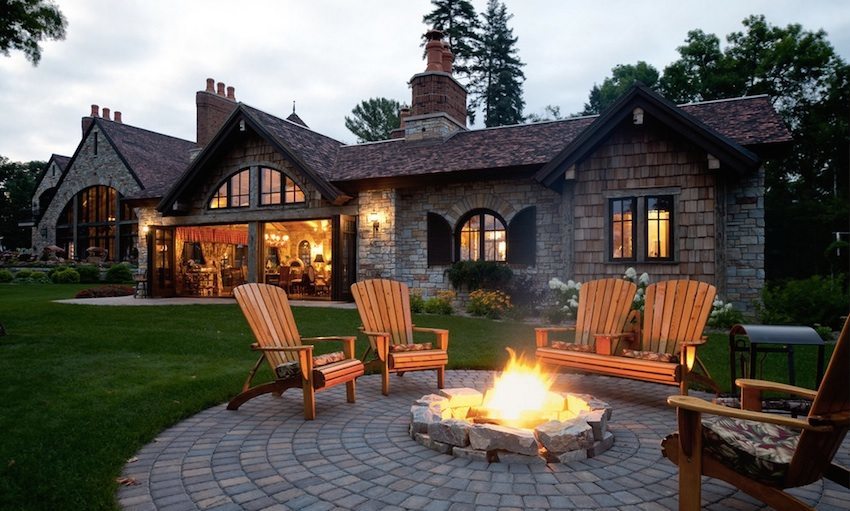Content
- Putty classification: purpose, pros and cons
- Cement-based putty mixture
- Gypsum-based putty
- Ready mixes
- Other types of putty
- Varieties of putty by purpose (by size fraction)
It is unlikely that one can now find a person who would not know what putty is. Everyone who has ever visited a hardware store or thought about repairing at least once in his life imagines what is at stake.

Putty or putty - a widespread building material in the form of paste or powder, designed to level the surface with the further use of finishing materials (wallpaper, paint).
Using putty, both the most insignificant and sufficiently large irregularities on almost any type of surface lend themselves to leveling. Let us consider in more detail the most popular types of putty for decorating apartments, compare their capabilities and application features.
Putty classification: purpose, pros and cons
For internal work, three basic types of putty are used:
- Cement putty.
- Gypsum
- Ready to use mixes.
Cement-based putty mixture
Cement putty, sold in the form of a dry mix, is universal, it can be used both for internal work and for external work. The solution prepared for puttying is a mixture of a sand filler, a binder (cement) and a solvent (water).

Its main advantages:
- Good strength indicators.
- Excellent moisture resistance.
- The ability to eliminate bumps more than 1 cm.
- Low price.
The main disadvantages:
- More granular than other putty structures.
- After drying, the applied mixture often undergoes shrinkage, which is why it is necessary to make a second layer.
- Cement putty is inelastic, microcracks may appear on it over time.
- Do not use on wooden surfaces.
- Hard to process.
- It has a yellowish tint.
USEFUL INFORMATION:Alternative to roller and brush: for painting walls, choose a spray gun

Gypsum-based putty
Due to the physical characteristics of gypsum, this type of putty is used only for interior decoration - processing walls and ceilings.
Gypsum putty is an excellent material for decorating an apartment. It is a mixture of gypsum, polymer additives and mineral fillers (silica sand or marble dust).

Gypsum provides a natural adjustment of humidity: its excess is absorbed, and when dry air is given back.
The main advantages of gypsum putty:
- Allows you to get a completely smooth, devoid of roughness surface.
- Ideal for preparing walls for painting.
- Good thermal insulation and fire resistance.
- Quick drying.
- It does not have a foreign smell, does not cause allergies.
- Environmental safety, lack of synthetic additives.
- Profitability - consumption is 2-3 times less in comparison with cement putty.
The main disadvantages:
- Not suitable for rooms with large temperature differences and high humidity (bathroom, kitchen)
- It is easily damaged.

Ready mixes
Another popular type are ready-made mixtures, or the so-called liquid putty. It can be recognized by volumetric, tightly corked buckets. Liquid putty has a creamy consistency and is very convenient to use, because it does not dry out due to special additives until it reaches the surface to be treated. These properties make it the best option for beginners.

Depending on its composition, liquid putty can be:
- acrylic;
- latex;
- polymer.
All these types of liquid-based putties have their own characteristics.
- Acrylic putty is used for the final finishing of walls or ceilings for painting. In essence, this is the final layer of surface finishing in the room. Its thickness is not more than 1 mm, the final result is an almost glossy surface.
- The latex mixture is very plastic. It is used for processing drywall, seams, niches, arches. Suitable for puttying surfaces before painting with oil or water-dispersion paints.
- Polymer putty is a leader in terms of elasticity, it is very convenient in work and gives a guaranteed high-quality and durable result, but compared to other formulations it costs significantly more.
USEFUL INFORMATION:Laying tiles on a drywall in the bathroom

The main advantages of ready-made mixtures:
- Wide application. They can be used for finishing walls and ceilings from a wide variety of materials, suitable for processing, wooden structures, steel and aluminum parts, gypsum plasterboards.
- High moisture resistance, resistance to aggressive environments.
- Elasticity, profitability.
- Self-leveling effect.
- Short drying time, saving time during work.
- No need to self-measure components and knead putty mortar.
- Durability, strength (the material does not crumble, is not covered by cracks).
All types of putty, sold in finished form, have one common minus - high cost. Nevertheless, the high price in comparison with dry mixes in liquid putty is offset by significantly higher quality properties.
Please note: the shelf life of different types of putty is approximately 6-12 months. After this time, the mixture begins to lose its properties. However, if a little time has passed since the expiration date, the putty mixture was kept in a cool dry indoors and has not changed its appearance (dry - not damp, not gathered in lumps, liquid - not changed color), it can use.
Other types of putty
There are several more varieties of ready putty mixtures:
- Oil putty consisting of drying oil, chalk and accelerating drying additives is used to work with wet surfaces.
- Glue and oil-glue putties are indispensable for internal work with surfaces intended for painting with enamels and oil paints.

Varieties of putty by purpose (by size fraction)
There is another conditional classification of putties, taking into account the particle size of the mixture. This indicator affects the purpose and sequence of use of the finished solution. According to him, putties are divided into starting, finishing and universal.
USEFUL INFORMATION:How to attach logs to a concrete floor
Starting
Serve for rough leveling of the surface and are the basis for subsequent finishing puttying.
If dense wallpapers are glued to the wall, you can get by with just starting putty.
They have the following features:
- They have a larger particle size in comparison with the final mixtures. Harder to grinding, since they create a rough surface after hardening.
- They have good adhesive characteristics.
- They are a solid basis for further work with any decorative materials.
- They are applied with a layer of 0.3 to 2 mm.
Finish
Their mission is to create the ultimate grounds for demanding finishes (paint, textile wallpaper). Such mixtures have a number of features:
- Create a smooth surface for use with decorative materials.
- Used on a surface pre-leveled by the starting compound.
- They are applied with a layer of 0.1 to 0.4 mm.
- Easy to grind.
- Less durable than starting mixes.

Universal
Combine the basic qualities of starting and finishing mixtures. They are popular with non-professionals, as they can be successfully used for leveling the surface, minor repairs and creating a high-quality smooth surface. The price of universal compounds is not the lowest, while the final quality of the obtained layer of universal putty is inferior to standard technology using start and finish mixtures.

EXPERT SITE
Tsugunov Anton Valerevich
Master Station Wagon
- Since 2003, I have been engaged in the repair and decoration of premises.
- Over 100 completed objects.
- I appreciate the quality, more than the quantity!
Personal page >>>
Friends!
I offer you the service "Friend Builder"
As this site develops, subscribers and visitors are turning to me more and more often asking for help with advice on various issues of repair and decoration.
Questions are sometimes asked very complex and interesting. You can’t write an article for each situation, so I decided to advise you individually.
Thanks to you, friends, a new direction of my favorite work has been born - share your experience and benefit everyone who is undergoing repairs!
Get a one-time consultation from me >>>
Order full apartment repair support >>>


